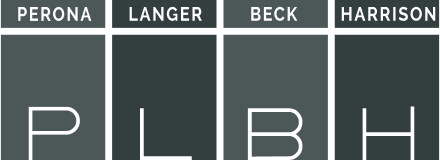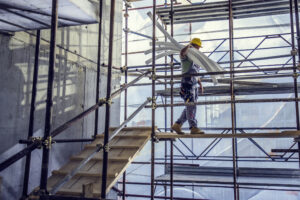Falls from scaffolding, ladders, and roofs are among the most common and dangerous accidents on construction sites. These falls can result in serious injuries or even fatalities.
If you are a worker in Southern California, it is crucial to understand your rights and the steps you need to take if you are injured in such an accident. For personalized legal assistance, contact PLBH at (800) 435-7542.
Common Causes of Falls in Construction
1. Scaffolding Falls
Scaffolding accidents can occur due to several reasons, including:
- Improper Assembly: Scaffolding not correctly assembled or maintained.
- Lack of Guardrails: Missing or inadequate guardrails that fail to prevent falls.
- Unstable Foundation: Scaffolding placed on uneven or unstable ground.
2. Ladder Falls
Ladder accidents are often the result of:
- Incorrect Usage: Using ladders improperly or overreaching while on the ladder.
- Defective Equipment: Using damaged or defective ladders.
- Inadequate Training: Lack of proper training on ladder safety.
3. Roof Falls
Falls from roofs can happen due to:
- Weak Roofing Materials: Roofing that cannot support the worker’s weight.
- Lack of Fall Protection: Absence of safety harnesses or guardrails.
- Slippery Surfaces: Wet or slick roofing materials causing slips.
Steps to Take After a Fall
If you suffer a fall from scaffolding, ladders, or roofs, taking the right steps is crucial to ensure your health and protect your rights.
1. Seek Immediate Medical Attention
Your health is the top priority. Seek medical attention immediately, even if you think your injuries are minor.
- Emergency Care: Go to the nearest emergency room or urgent care for severe injuries.
- Follow-Up Care: Schedule follow-up appointments with your healthcare provider to monitor your recovery.
2. Report the Incident
Notify your supervisor or employer about the fall as soon as possible. Reporting the incident promptly is essential for filing a workers’ compensation claim.
- Verbal Notification: Inform your supervisor immediately after the accident.
- Written Report: Provide a detailed written report describing how the fall occurred and the nature of your injuries.
Understanding Workers’ Compensation
Workers’ compensation is a no-fault insurance system designed to provide benefits to employees injured on the job. It is essential to understand your rights under this system.
Benefits of Workers’ Compensation
- Medical Expenses: Covers all necessary medical treatments related to your injury.
- Temporary Disability Benefits: Provides compensation for lost wages if you cannot work temporarily.
- Permanent Disability Benefits: Offers compensation if you suffer a permanent impairment.
- Supplemental Job Displacement Benefits: Provides funds for retraining if you cannot return to your previous job.
- Death Benefits: Provides compensation to the dependents of a worker who died from a work-related injury.
Filing a Workers’ Compensation Claim
1. Complete the DWC-1 Claim Form
Your employer should provide you with a Workers’ Compensation Claim Form (DWC-1). Fill out the “employee” section of the form and return it to your employer.
- Detail Your Injuries: Include all relevant information about your injuries and how the accident occurred.
- Submit the Form: Return the completed form to your employer, who will then forward it to their insurance carrier.
2. Follow Up on Your Claim
Stay in contact with your employer and the workers’ compensation insurance carrier to ensure your claim is being processed.
- Regular Communication: Keep track of all communications and follow up as needed.
- Medical Evaluations: Attend any required medical evaluations to assess your injuries.
Legal Rights Beyond Workers’ Compensation
In some cases, you may be entitled to additional compensation beyond workers’ compensation benefits. Understanding these rights can help you maximize your recovery.
Third-Party Claims
If a third party’s negligence contributed to your fall, you might be able to file a personal injury lawsuit against them.
- Examples: Contractors, equipment manufacturers, or property owners.
- Potential Compensation: Includes pain and suffering, lost wages, and punitive damages.
Benefits of Hiring an Employment Law Attorney
Navigating the legal complexities of a workplace injury claim can be challenging. Hiring an experienced attorney can provide several benefits:
- Expert Guidance: Attorneys understand the intricacies of workers’ compensation and personal injury laws.
- Maximized Compensation: Legal representation can help you secure the maximum benefits and compensation.
- Peace of Mind: An attorney can handle legal procedures, allowing you to focus on recovery.
Contact PLBH for Expert Legal Assistance
If you’ve been injured in a fall from scaffolding, ladders, or roofs, don’t wait to seek legal help. Contact PLBH at (800) 435-7542 for a free consultation. Our experienced attorneys are dedicated to helping you understand your rights and secure the compensation you deserve.

